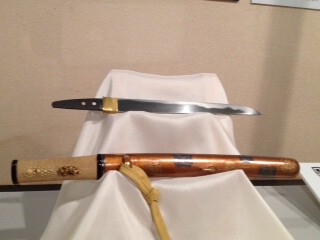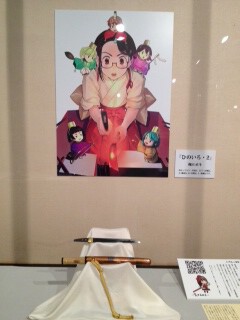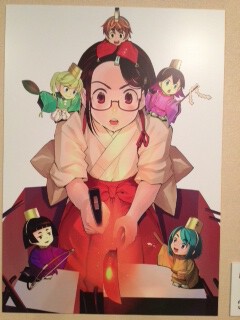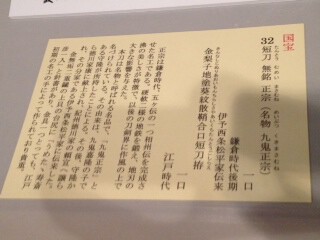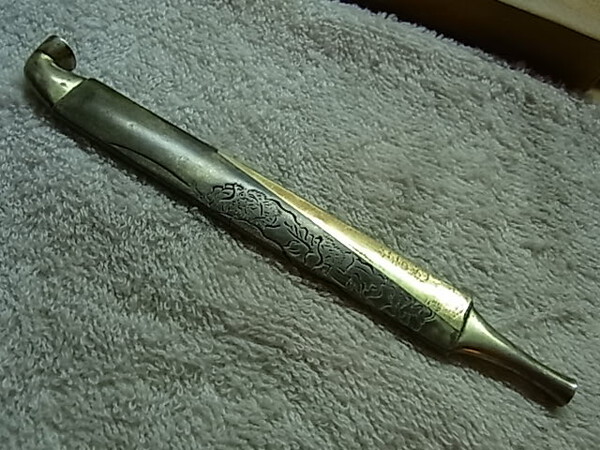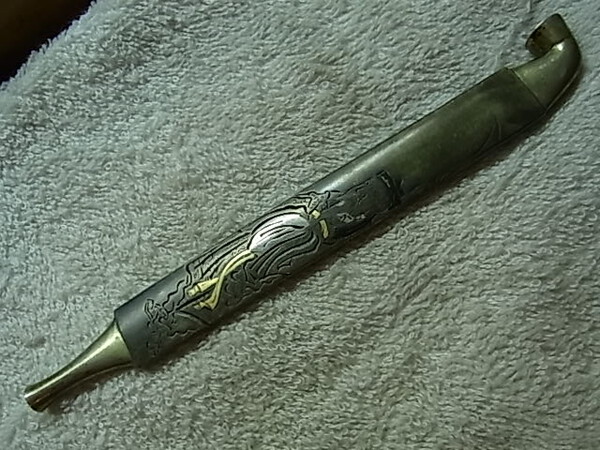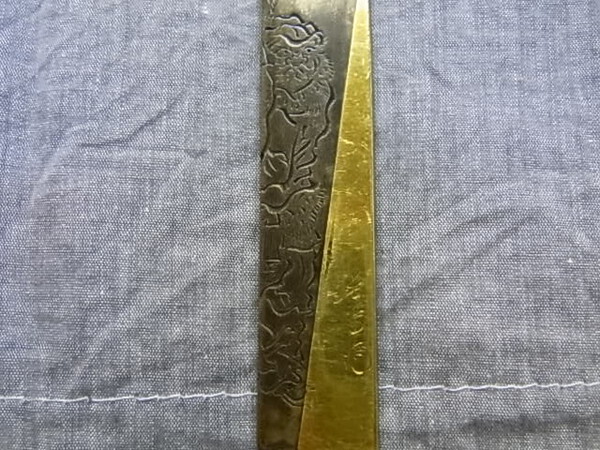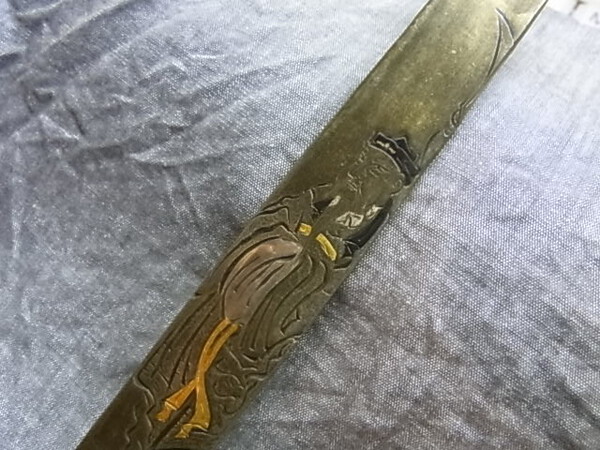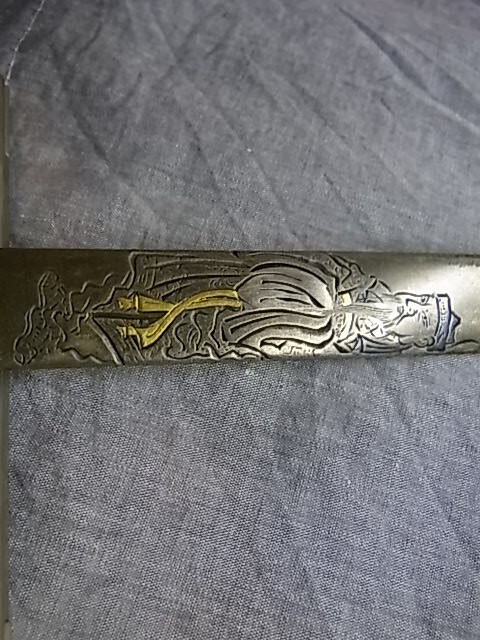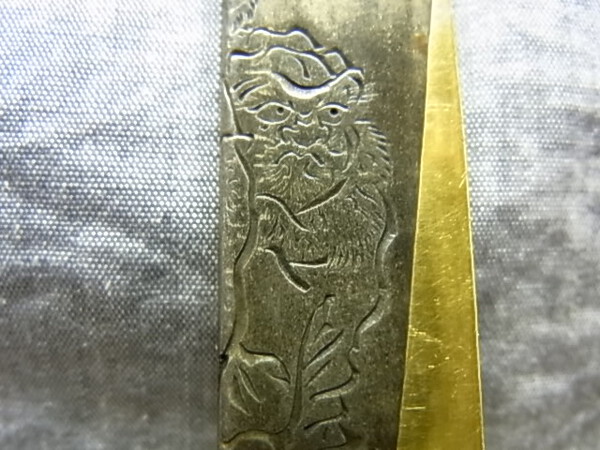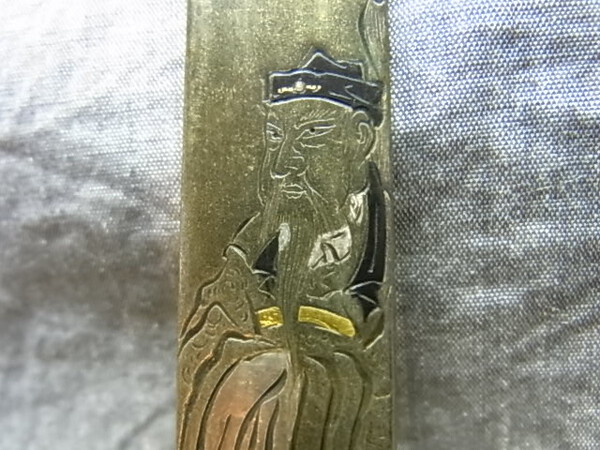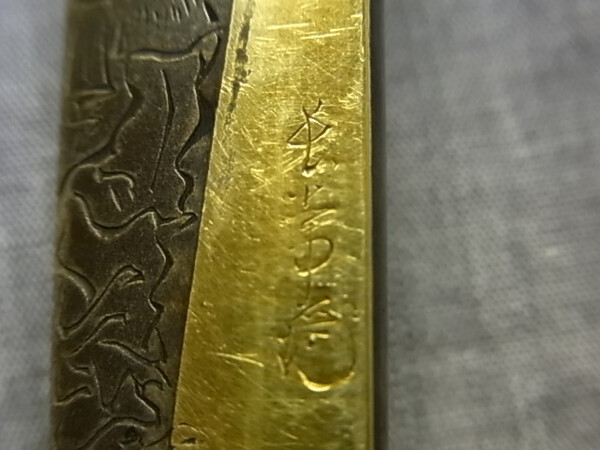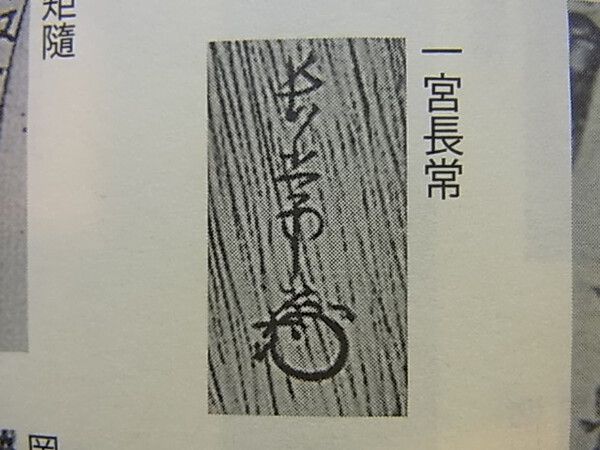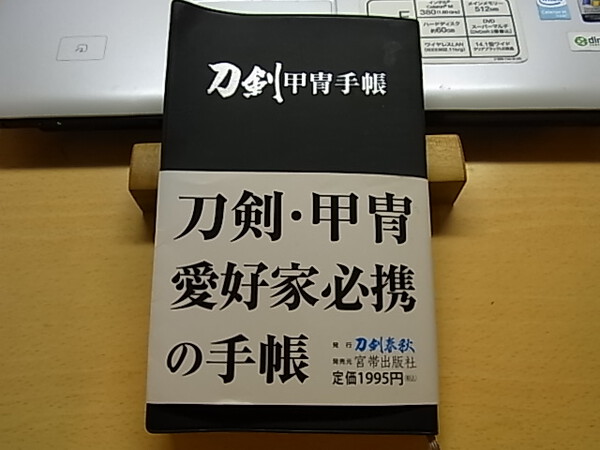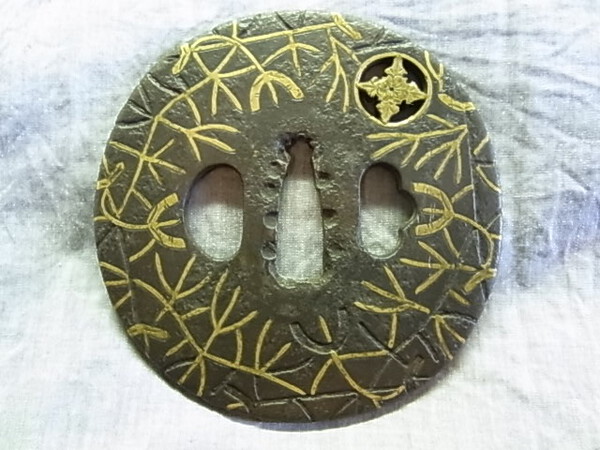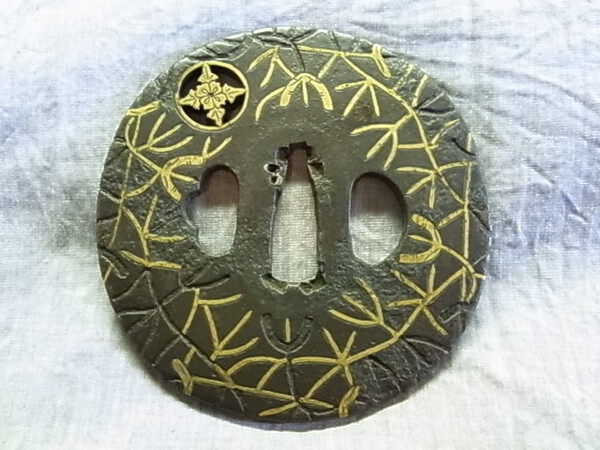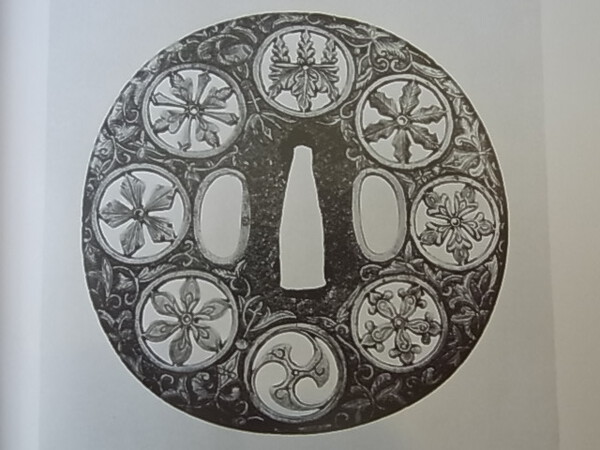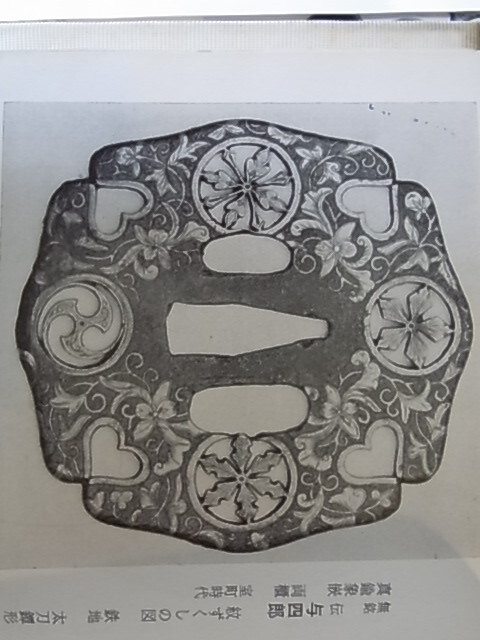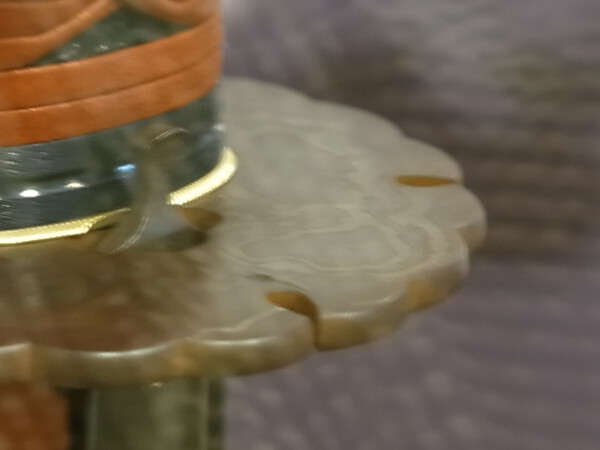-
Posts
14,157 -
Joined
-
Last visited
-
Days Won
265
Content Type
Profiles
Forums
Events
Store
Downloads
Gallery
Everything posted by Bugyotsuji
-
As explained above, this is a cooperative event between three venues, so today with a free ticket in hand I took the opportunity to see how the Hayashibara Museum of Art in Okayama City are holding up their end of things. The museum is set within part of the former grounds of the castle and incorporates one of the old gates as its entrance. On display was an eclectic mix of historically and artistically interesting pieces. A cute and colourful set of Ikeda lady's armour. A marvellous see-through summer Jimbaori. Kawari-kabuto and a huge dragonfly maedate. Relics of Ikeda Tsuneoki who with his son was killed at the battle of Nagakute (1584), kept by the Tottori Ikeda branch. Several swords of interest including an Unsho tachi and a Kokuho Masamune tanto with koshirae that the museum is alleged to have purchased for 200,000,000 JPY. The anime wall panels were simply extra eye candy. More, but it's been a long day and I need to sleep! (Now I have the last of their three folders these places are handing out for the summer joint exhibition!) :D
-
John. Many thanks to all who took part! Ron, this is how it came to me, and I admit that I did indeed rub it a little with a very soft cloth. Pity about that patina though...
-
-

Yari mei translation help requested
Bugyotsuji replied to Yoshimichi's topic in Translation Assistance
Thanks for the extra shots. A tough one to shoot! Have you tried Kunikata 国方? ( From 大隈, 1716-1735 享保. p.150 in Kawaguchi & Iida's Toko Soran) -
-
Today I stumbled over a Kozuka and after some struggle discovered the signature in the gold section reads Nagatsune, plus Kao. According to the Kokin Kinko Zenshu, and my trusty little Token Katchu Techo (with all you need to know about swords and armour at your fingertips), this would appear to be "Ichinomiya Nagatsune" of Kyoto who worked around 明和 天明, 1770-1788. It shows a well carved Chinese sage with a naginata on one side, with gold, silver and shakudo zogan, and some other hairy Yamabushi type fella on the reverse. That's all I know, plus one other thing... it was relatively cheap. The dealer gave me a reason, which apart from some minor damage, sorta, kinda makes sense. Any guesses as to why?
-

Yari mei translation help requested
Bugyotsuji replied to Yoshimichi's topic in Translation Assistance
That's rather hopeful of you Bill. Putting all your eggs in one basket! :D If you could take separate shots from different angles of, say, each group of two characters then we might have more of a fighting chance. -
Hmmm... looks like the horse gets it first.
-

Ichihara Ichiryushi Nagamitsu and 'Crow Castle'
Bugyotsuji replied to Eric Santucci's topic in Nihonto
Forgive me, Eric, I just used the expression of 'internet shop in Tokyo' in the conversation (in Japanese) with him to avoid naming anyone in particular. I am not really conscious where it is/was used, or by whom. If anyone feels offended, then I apologize. I wanted to convey the strength of local opinion on this issue but wasn't sure how. I did not mention Matsumoto Jo to him, so I have no idea about how people in that area feel about the name, although if that is what it is called there then they are probably used to it and even think of the name proudly and in a positive light. So the quick answer is that yes, he was offended that anyone might call Okayama Castle Karasu Jo as karasu has a negative connotation around here. Pimps, for example are called Karasu, that is to say, men who stand in the street pulling in customers for the ladies waiting inside. As I said in a previous post, 'karasu' is not a 'wrong' reading for the Kanji per se, it is just not used for Ujo, (Okayama Castle) as you correctly state. -

Ichihara Ichiryushi Nagamitsu and 'Crow Castle'
Bugyotsuji replied to Eric Santucci's topic in Nihonto
Just an update to the Ujo vs Karasu Castle debate. When I floated this discussion today, a very influential local elderly gentleman was most indignant at the thought that anyone might call Ujo 'karasu-jo'. The word karasu is an insult, he said, visibly agitated. Karasu can have many meanings but most of them are not complimentary. If some internet katana shop says karasu-jo, then they are simply ignorant, he expostulated. -

GIRLS and Boys Festival Dolls
Bugyotsuji replied to watsonmil's topic in General Nihonto Related Discussion
Now those are something special. A privilege to see them. Thanks too for the background information. Web have some odd bits around the house, but nothing like that. -

Ichihara Ichiryushi Nagamitsu and 'Crow Castle'
Bugyotsuji replied to Eric Santucci's topic in Nihonto
Many of these zombies around. If possible I will try to get to the bottom of this at this end. At least I hope I am open to any possibility! -

Ichihara Ichiryushi Nagamitsu and 'Crow Castle'
Bugyotsuji replied to Eric Santucci's topic in Nihonto
Rich, no sources are quoted, but I fed the wording into a URL window and several came up, including two articles on Japanese prisons, one at fresheye, J wikipedia, and in the Gree page on prison governors here, related historical events. http://dic.gree.net/entry/%E5%88%91%E5% ... /http%3Cbr There is a paragraph describing in more detail the above scenario: 日本刀製作を指導した刑務官 江村繁太郎 大東亜戦争中、岡山刑務所長、江村繁太郎は愛刀家であり前任地の四国・高松刑務所時代、教化事業としての刀剣製作を着想、計画した。 岡山刑務所刀剣工場での刀剣製作事業は、受刑者への単なる授産事業ではなく、命がけの教化事業だった。 一刑務官が手慰みの趣味で行ったものではなく、法務省=国が公認した「国営事業」で、鍛造、研磨他100名を超す日本一とも言える大規模な刀剣製作工場だった。 鍛造に機械ハンマーが用いられ、鍛造、研磨は分業化し、従来の零細個人作刀とは違う工業的製作法が採り入れられていた。炭や資材がふんだんに使えた。 刀剣製作に携わった受刑者達の多くは出所見込みの無い重刑者であり、全国から選り抜かれた受刑者が集められた。彼等は、刀剣製作に自らの生き甲斐と意義を見い出し、積極的且つ真摯に仕事に取り組んでいた。 焼入れと銘切りは必ず江村所長が行っていた。これら刑務所で造られた日本刀は江村刀と呼ばれる軍刀である。 脚注 Anyone need a full translation? (Roughly... Having found it was a good idea when this lover of Japanese swords was formerly governor of the prison in Takamatsu, he created a government recognized National Project within Okayama Prison with over a hundred smiths, polishers etc., said to be the largest such endeavour in Japan at the time and using hardened lifers chosen from throughout the country. Emura the governor always quenched them and cut the Mei on every one of these gunto, and thus they came to be called Emura swords.) -

Ichihara Ichiryushi Nagamitsu and 'Crow Castle'
Bugyotsuji replied to Eric Santucci's topic in Nihonto
Here is one with a shorter name: http://www.tsuruginoya.com/mn1_3/f00148.html According to the blurb, the prison governor, Emura Shigetaro established a forge within the prison (at Sakura-bashi back then), where many gunto were made. His own blades he signed either with his name or with the artisan Mei Nagamitsu, and he is known in these parts as 'Kangoku' Nagamitsu. (Did someone authoritatively debunk this at some point?) Incidentally there is an extraordinary story about the execution ground at Sakurabashi which I heard here maybe 30 years ago which I will tell if there is interest. 戦時中、岡山刑務所内には大規模な公認の刀剣製作工場が存在した。同所長の江村繁太郎氏は勤務の傍らに自らも作刀し、また、受刑者にも本鍛錬軍刀を製作する技術を指導し、多くの軍刀を製作したといわれている。所謂、「監獄長光」「刑務所長光」 と称される一原長光の軍刀である。銘振りは多岐に及び 「一原長光」「備前長光」「長光」「市原一龍子長運斎江村長光」「江村作」「江村」などとも切る。 PS Sakurabashi is just downriver of the castle. -
Uwe. A friend was attending the sword conference in Miyagi over the weekend and seeing a Yoshiro tsuba there he asked the 'experts' around the table if Yoshiro were ever signed 'Hachiman'. "Yes, they were." "What would it mean?" he asked. "Rather like Tenka Ichi. An expression of conviction as to being the best under the sun," the gentleman explained.
-

Ichihara Ichiryushi Nagamitsu and 'Crow Castle'
Bugyotsuji replied to Eric Santucci's topic in Nihonto
As a resident of Okayama may I say that Ujo (as many have mentioned above) is the only way anyone around here pronounces it. I would not expect people from Tokyo or other regions for example to know this particularly. Just to be on the safe side I phoned my sword teacher who is from good Okayama stock, head of the local branch and on the national committee of the Nittoho and he said it is and always has been Ujo. (To read it Karasu-jo, you would be emphasizing the meaning to someone unfamiliar with the single sound U, so in that sense it is not 'wrong' per se.) -
Interestingly on weekends they run all kinds of parallel workshops to take advantage of the exhibition. Today there was a special introduction in the lecture hall for members of the public interested in Kansho/Kantei and how to hold a Nihonto, etc. The speaker asked how many had heard through Twitter about this opportunity and almost everyone raised their hands. There were perhaps thirty newcomers seated there. He showed some Powerpoint slides on the possible roles of Nihonto, how they are made and what to look for in the steel. Once they had the background information, he gave them a break and told them to wash their hands and get ready to remove bags and jewellery! There were five blades laid out representing easily recognisable styles, for example San-bon-sugi from Seki, Choji from Bizen, and Kikusui from Osaka. A lot of women in the group, and everyone quite friendly, respectful and mannerly. Next Sunday they will have several sets of old smelly armour for people to helped on with and have their photos taken. I have helped with these sessions before and you can get hundreds of people in one day. Backbreaking work. Gradually you get to be able to do a young lady in about a minute and a half. Kneel and fit her Sune-ate round her shins and haidate round her waist. On with her Kote and then Doh breast plate, and wind her and bind her tight. Stick a sword through the mawashi, fit a hair bag and slap on the Kabuto... voila! They love it! :D
-
Not in the same category or the same quality, but would this one qualify for the Y of Yoshiro at least? Crumbs from the Yoshiro table? Or is it some other school or area?
-
-
Tobias, they are producing a booklet, but is not yet ready apparently. I was chatting with some of the people there and picked up some fascinating insights. The Koshirae for Mr Ando's sword probably cost more than the blade itself to make, with every little detail of the tosogu made from scratch by trained artisans. Even the tsuba has swirls in it, showing that it too contains meteorite. Incidentally the amount used in the long blade was reduced to make the patterns less obvious. One Dotanuki-like blade was made by Mikami Sadanao of Aki (with koshirae) to illustrate Koike Kazuo's Kozure Ookami ('Lone Wold and Cub' in the US). The two-volume set of his books were displayed there, with a backdrop of three large panel illustrations by different artists. There was a beautiful katana blade with stunning hamon by Oono Yoshimitsu, with a tsuba-less long black Kenshin goshirae. Oh, and the curator there, Mr Ueno, assured me when I told him about the differences of opinion on this forum, that this is really a fun exhibition, aimed primarily at the young for the summer vacation.
-
Ken, I'll try and get some better shots of the blade for you. In a hurry yesterday. I'll pass on your other questions. *Side note to Brian. Probably browser difference but photos below a certain pixel density, ie from my iPhone show up as photos and say they have been 'opened' 196 times for example, whereas larger 1 mg photos come up only as a clickable line of code and show they have only been clicked on say 7 times in comparison, as the two Devil Tachi shots above. Are some people not being able top open those larger 'hidden' shots, or is there a difference in the click counter, I wonder? PS They are allowing non-flash photography this time.


